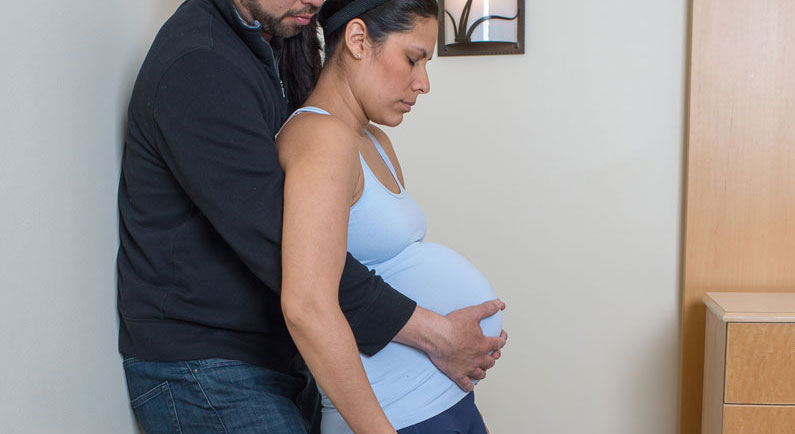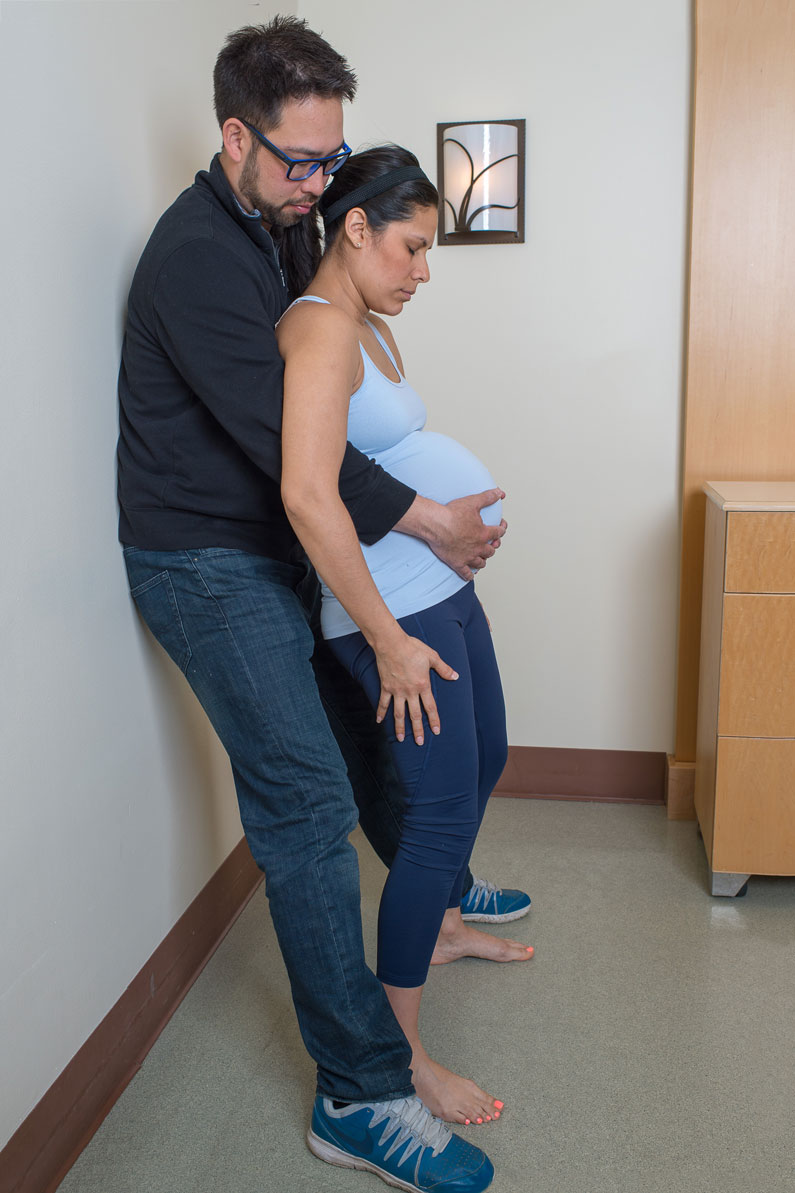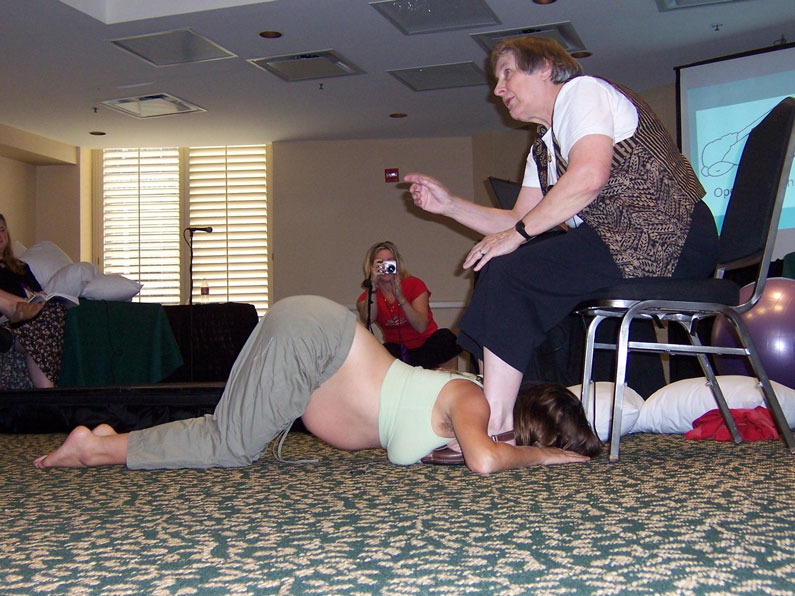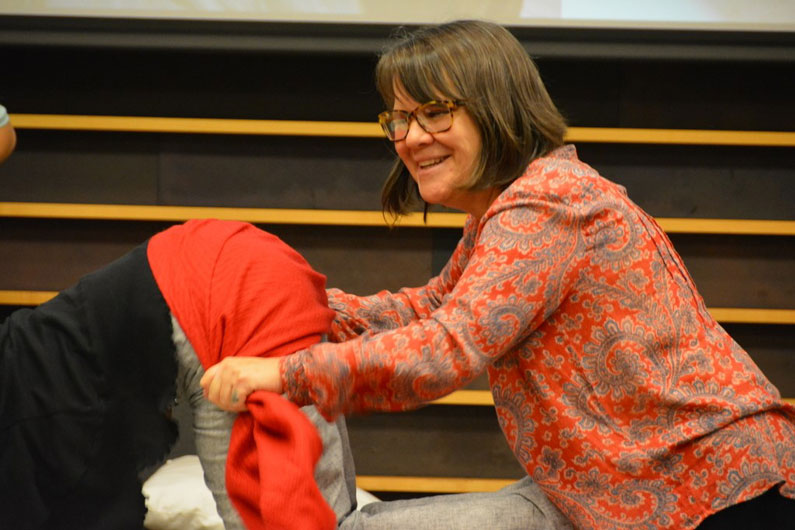
When doctors, doulas, midwives, and nurses learn Spinning Babies®, they get excited. The stories of the results are amazing – even to me after 20+ years of my approach, Spinning Babies®!
Learn our principles so you can make birth choices with your inner wisdom awakened.
When contractions come and go or if they grow stronger or reduce in power over days around the due date, please suspect the baby may not be engaged.
The uterus gets busy trying to send baby’s head into the top of the pelvic passage. Contractions which try to engage baby can be painful even if the cervix is only 2 cm dilated or even closed. Opening the pelvis can take the pain away in early labor and let baby into the pelvis. Of course, the baby isn’t going into the bones, but rather between them.
The bones actually form a tunnel for baby to go through. The inlet is the top of that tunnel through the pelvic bones.
A birthing person can flatten their lower back during a contraction to open the entrance to this tunnel wider. Some people call it the “cat” position of the “cat/cow” yoga move which flexes and extends the spine. “Cat” is the flexion move to curl the lower spine. The tuck part of Abdominal Lift and Tuck in this birth story (below) is curling or tucking the tailbone in just for the time of the actual contraction.
Karissa Hiebert, doula, and writer for All Glorious Within from Manitoba, Canada shares a Spinning Babies® story of helping a baby engage:
“Hi Gail! I wanted to share with you about my latest doula birth story and how your techniques were helpful in it, especially the Abdominal Lift & Tuck and Shake the Apples.
She was 4-5 days overdue with her first and the same now with her second.
She started having ctx (contractions) Tuesday evening and called me at 4 a.m. saying they were 7 minutes apart. She could still talk through them, so she went back to sleep.
On Wednesday evening the ctx picked up again, and there was a snowstorm, so they went to a hotel in the city to be near the hospital. She was able to sleep pretty well that night, though ctx didn’t really stop this whole time, just weren’t always regular or very hard. They went home, and she took an Epsom salt bath.
When she got out of the tub, ctx had picked up some. She updated me sometime later that things hadn’t really changed much but weren’t any less intense. I offered to come over and work with them.
I got there around 6:45 p.m. on Thursday. One of the first things she told me was that she didn’t think her baby had dropped. If I had known that in the first place, I would have probably gone over much sooner.
I was glad to have all my Spinning Babies® Workshop notes along. It was good to read over everything on a baby not being engaged, etc.
Contractions went from 6-7 min apart to 3-4 min apart after 2 Abdominal Lifts and Tucks!

Then, she did Open-knee Chest again with me doing Shake the Apples. Within 1 or 2 ctx like that, she said baby had moved down (she had felt it).

The Open-Knee Chest is a variation on the hands and knees position in which the knees are far from the abdomen. This is another way to open the inlet, or entrance, to the pelvis when baby is high and the uterus is contracting. A baby at -4, -3 or -2 indicates how high baby is above the middle (0 Station) of the pelvis. -3 is typical before baby engages and -2 means baby is just engaging. “0” is fully engaged, but -1 will do! After full dilation and the pushing urge gets established, the baby will begin moving lower to the +1, +2 and lower stations. Baby becomes visible at +3 or +4. These positions are not a match then.

Shaking the Apples is simply what we call jiggling the buttocks. The idea is the fruit will drop when big muscles relax fully. It’s not really shaking like you’d shake a fruit tree, please! But rather jiggle the buttocks steadily for 3-5 minutes while the birthing person stands, lays on their side or is on hands and knees. A 5-minute session of jiggling the hips may let the muscles inside the pelvis relax so much that the pushing stage is short and tearing of the skin when baby emerges over the perineum is less likely than when the muscles are tight or even typically taut.
We left for the hospital almost 3 hours after I had gotten to their place. She was admitted at “a good 6 cm” and -2 station (so it must have been -4 at home, if that).
She had her baby about 5 hours later, totally naturally. She had an 11-minute pushing stage, but she wasn’t pushing that whole time; she was mostly done in 2 pushes.
Baby was born with a major nuchal arm [arm wrapped around the neck], which could explain some of the lack of engagement or funny position. Judging from the slight caput, the head seemed to have been a bit asynclitic [tipped a little towards the side]. No tearing, not too much bleeding, healthy baby, no pain meds. God definitely answered many prayers in this birth!”
Have a Spinning Babies story? We’d love to hear it! Send your story to info@SpinningBabies.com.
One of our most beloved products, now with subtitles in English, French, and Spanish, offering expert support to reduce intervention and increase comfort throughout pregnancy and birth.